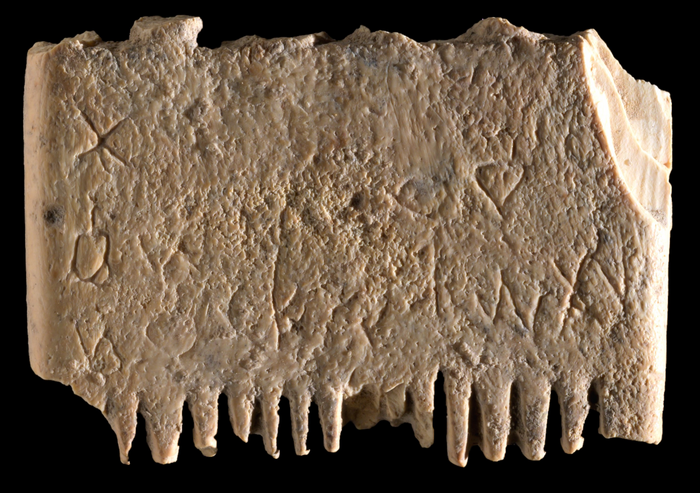The alphabet is believed to be created around 1800 BCE and the Canaanites were the first to utilize it, which was later adopted by the majority of other languages around the globe. However, present Canaanite inscriptions had never been understood by archaeologists so far.
A remarkable finding now shows a whole Canaanite phrase from around 1700 BCE. It is inscribed on a tiny ivory comb and contains a spell to get rid of lice, as per a press release.

Letters in an Elephant Tusk
A team from the Hebrew University of Jerusalem (HU) and Southern Adventist University in the US found the comb near Tel Lachish in Israel under the direction of Professors Yosef Garfinkel, Michael Hasel, and Martin Klingbeil.
Semitic epigraphist Dr. Daniel Vainstub from Ben Gurion University decoded the inscription (BGU). Professors Rivka Rabinovich of HU and Yuval Goren of BGU analyzed the ivory and discovered that it came from an elephant tusk.
The inscription's letters were carved in an extremely shallow fashion. It was unearthed in 2017, but Dr. Madeleine Mumcuoglu didn't see the letters until after post-processing in 2022.
The ivory comb is not very large; it is about 3.5 by 2.5 cm. On both sides of the comb are teeth. The comb teeth were shattered in antiquity, but their bases are still discernible.
The comb has 17 Canaanite letters on it. They date back to the early stages of the development of the alphabet script, making them extremely archaic. Canaanite letters combine to make the following seven words: "May this tusk root out the lice of the hair and the beard."
According to Garfinkel, this is the first Canaanite-language passage that has ever been discovered in Israel. There are Canaanites in Ugarit, Syria, even if they don't speak the language or use the alphabet that is still in use today. The Canaanite cities were also mentioned in the Hebrew Bible, the Akkadian-written Amarna letters, and Egyptian writings.
"The comb inscription is direct evidence for the use of the alphabet in daily activities some 3700 years ago. This is a landmark in the history of the human ability to write," Garfinkel remarked.
Presence of Lice
Under a microscope, the study team examined the comb itself for the presence of lice and took pictures of both sides. On the second tooth, 0.5-0.6 mm-long head lice remains were discovered. However, only the outside chitin membrane of the nymph stage head lice was preserved due to the Lachish climate.
For the first time, a complete verbal sentence written in the Canaanite dialect used by the Lachish locals is available for comparison with other sources of the language.
The writing on the comb also uncovers several poor living conditions at the time, especially for haircare and treating lice.
In the second millennium BCE, Lachish was a significant Canaanite city-state and the second-most significant city in the biblical Kingdom of Judah. Lachish has produced the most Canaanite inscriptions of any location in Israel to date with 10.
The team published their findings in the Jerusalem Journal of Archaeology.
This article is owned by Tech Times
Written by Jace Dela Cruz
ⓒ 2025 TECHTIMES.com All rights reserved. Do not reproduce without permission.




